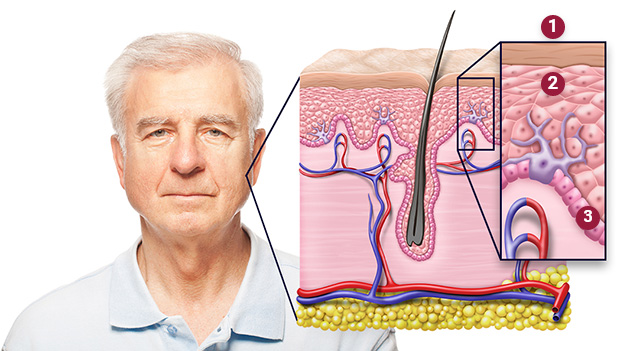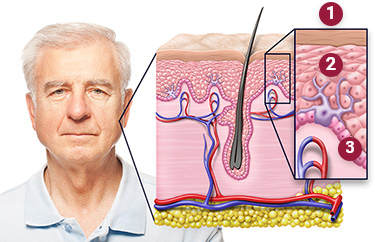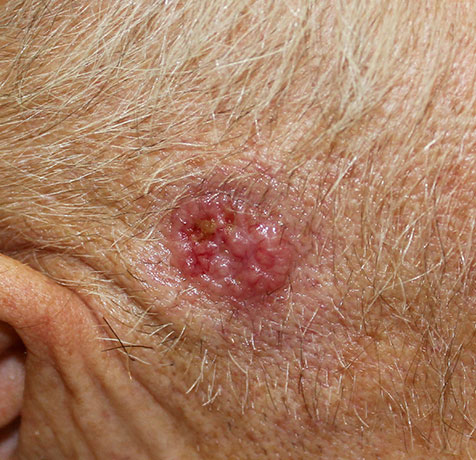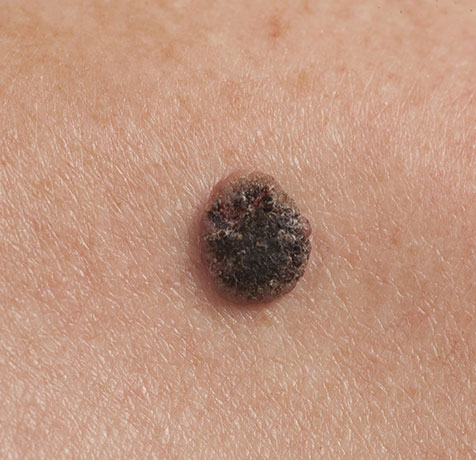SKIN CANCER 101
Treating the two Most Common Types of Skin Cancer
Mohs surgery is used to treat the 2 most common types of skin cancer: basal cell carcinoma and squamous cell carcinoma. There are also other treatment options for these types of skin cancer. Knowing as much as you can about your skin cancer can help you and your dermatologist choose the right treatment.
Where basal and squamous cell skin cancers happen
Basal and squamous cell skin cancers are named after the type of skin cells that turn into cancer: basal cells and squamous cells.


- Epidermis: the top layer of the skin, which is most often exposed to the sun and the UV rays that turn these cells cancerous, causing them to grow out of control
- Squamous cells: flat cells in the top part of the epidermis
- Basal cells: cells in the deeper part of the epidermis
What is the difference between basal cell skin cancer and squamous cell skin cancer?
While basal and squamous cell skin cancers happen in the same layer of the skin, there are many differences between these 2 common forms of skin cancer.
Tap a tab to learn more.
Basal Cell Skin Cancer
Squamous Cell Skin Cancer
Basal Cell Skin Cancer

- 8 of 10 skin cancers start in basal cells
- Usually happens on parts of the skin often in the sun, like the face, head, and neck
- Almost always grows slowly
- Rarely spreads but can come back in the same place on the skin
- May look like:
- Bumps or growths that are pearly or waxy, white or light pink, or brown like an age spot
- Red, scaly patches
- Sores that bleed easily, do not heal, or that ooze or crust
- A scar-like sore in an area that has not been injured
- A sore with a sunken area in the middle
Squamous Cell Skin Cancer

- 2 of 10 skin cancers start in squamous cells
- Can happen in areas often in the sun, like the face, ears, neck, lips, and back of hands, but can also happen where there are scars or skin sores
- Some types can be fast growing
- Can come back in the same place and are more likely to grow into deeper layers of the skin and spread to other parts of the body
- May look like a:
- Scaly, crusted, and large reddish patch
- Sore that does not heal
- Wart or mole that has changed shape, color, or texture